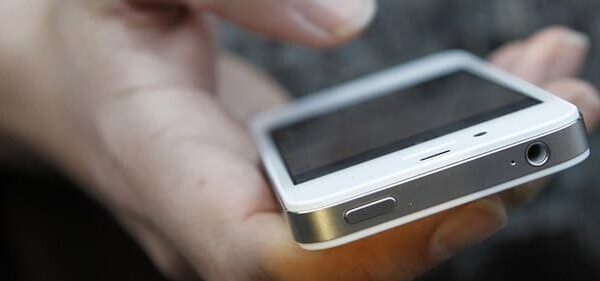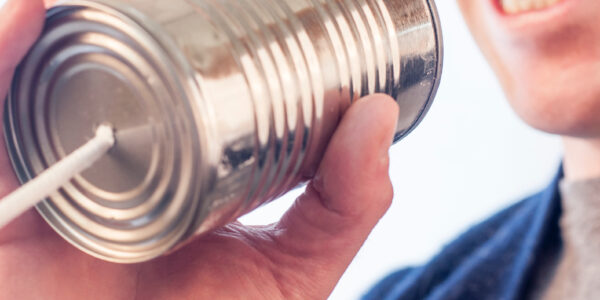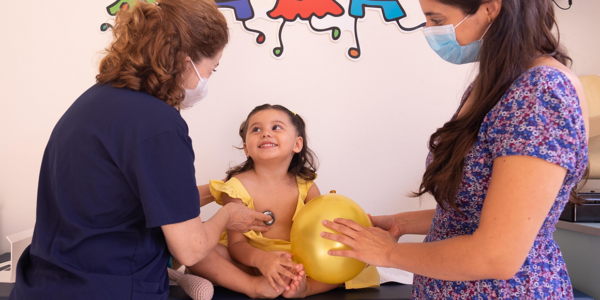Text to landline service. You might see or hear that and say, what does that mean? Why do I care? Most importantly, how does it help me?
Exactly like it sounds, text to landline means that people can send SMS and MMS messages to your landline phone number. Software like OhMD allows you to see and respond to those messages. Patients will receive responses on their mobile device as would from family or friends. This makes patient engagement and communication seamless. If your EHR partners with OhMD, you have the option to integrate and have text conversations auto-transfer to patient medical records.
How does text to landline service help you?
Data from the Pew Research Center suggests that 80 percent of Americans will not pick up a phone call from an unknown number. Meanwhile, 98 percent of text messages are opened and read, most within the first 3 minutes. This means that even if patients don’t have your phone number saved, they are far more likely to engage with you if you contact them via text.
If you are assessing how to best go about offering landline texting to patients, you have a couple of options to consider. First, let’s start with some technical information to set the stage for your options.
10DLC – What it is and why it matters
In healthcare, we all know about the wide array of regulatory compliance requirements in place when caring for a patient. Recently, the Federal Communications Commission (FCC) instituted compliance regulations for wireless carriers (think Verizon, AT&T, T-Mobile, and the like).
This regulation, called A2P 10DLC, is designed to increase trust across the messaging ecosystem. A2P 10DLC refers to a system in the United States that allows businesses to send Application-to-Person (A2P) type messaging via standard 10-digit long code (10DLC) phone numbers. Carriers’ A2P 10DLC offerings provide better delivery quality and lower filtering risk than long code SMS of the past, while using the same phone numbers.
We all know that people hate spam and no one wants to be sent unsolicited texts.
As part of the A2P 10DLC regulation you must ensure that patients have provided consent for text messaging. In basic terms, you need to get permission to text your patients or clientele.
When you’re considering what service to go through, be sure to choose one that makes compliance with A2P 10DLC easy. At OhMD, for example, we handle the registration for you. With every text to landline option (with the exception of toll free numbers), OhMD will register each client’s number to remain compliant with the wide sweeping changes to business-based messaging.
Now that we’ve covered the regulations to be aware of, now it’s time to consider your options for text to landline services.
Here are some reasons why you may choose one option over another:
Text-enable your existing office number with OhMD
To keep things simple, you can choose to use your existing office number as your textable landline. Here are a few reasons why you may choose this option:
Patients recognize the number
Imagine you’ve just received a text message from an unknown number. Now imagine that text is asking you to reply and make an appointment with your doctor. How likely would you be to respond?
Now imagine getting a text from your doctor’s office, whose number you have saved in your contacts list on your phone. Immediately this feels safer to engage with.
Given the rise in smishing cases, people are far more hesitant to open, let alone respond to, unknown numbers over SMS. For this reason, using text to landline as an option in your practice could make your patients more likely to respond to your messages. This is even more true if you encourage patients to add your textable number to their phone contacts.
It’s more convenient for everyone
The plus side of a text to landline number lies in its simplicity and ease of use. Put yourself in your patients’ shoes and consider trying to keep two office numbers straight, one for calling, the other for SMS messaging. Patients are bound to mix up the textable and callable numbers. And those confused patients may end up complaining to you.
Textable landlines do not disrupt pre-existing call logic, meaning that patients still have the option to call in to the office, but now they can also text in.
You won’t need to add a new number to your website and social media
Using the same textable landline number means less administrative work for you. Nobody will need to go into your website and social media accounts to add another phone number.
2. Use an OhMD-provided local area code number
Purchasing a new textable landline number for your office using your local area code or a vanity number has a few benefits.
Voicemails can be transcribed for you
In purchasing a new phone number through OhMD, you are allowing OhMD Visual Voicemail to transcribe voicemails for you. Visual Voicemail is able to match voice calls with existing patient phone numbers. This will come through as both a automatically transcribed message and a recording of the message.
With OhMD’s Virtual Phone Assistant, every call placed into your dedicated line is an opportunity to improve the patient experience. The Assistant can provide a series of options to the patient, allowing them to choose what best suits their specific need. Our standard options are as follows:
- Automated Text – Press 1 to hang up and immediately receive an automated text. Transitioning phone call volume to text exchanges creates efficiencies for both patient and practice staff.
- Visual Voicemail – Press 2 to leave a voicemail for practice staff. Visual Voicemail can capture, record, and transcribe voicemails. Both the recording and transcription are added to the patient’s existing chat for staff to playback or read to assess the severity of the need. And these can immediately be converted to a text based conversation for streamlined workflows.
- Call Forward – Press 3 or stay on the line to be transferred directly to the main office line. Patients can exercise this option for more urgent matters. By eliminating a significant percentage of live call volume through options 1 and 2, call staff are able to move through hold queues faster, improving the patient experience and call abandonment rates in the process.
- Your patients will recognize your area code
If you decide not to use your office number as your textable landline, using your local area code makes your number feel more trustworthy to your patients. They may not recognize your phone number, but if they can recognize your area code they are more likely to engage with your message.
You can choose who has the option to text you
Some providers prefer to have a special phone number dedicated to texting if they do not want all of their patients contacting them via text. If your textable number is different than the office landline number, then only patients who are given access to the textable number can make use of it. This keeps the number of texts coming in much lower than it would be if all patients had access to the number.
Call-forward messages
Using a new number for landline texting allows for text messages sent from patients to your new number to be call-forwarded to your cell phone. This is especially useful for smaller practices with a solo provider. This way, patients are texting your office number, but it is forwarded to your cell phone. As a provider, receiving and responding to patient messages is an easier workflow, and your personal phone number still remains anonymous.
3. Use a toll-free textable landline number provided by OhMD
Purchasing a toll-free number has many of the same benefits as purchasing a new number with your local area code. It allows you to have calls and voicemails transcribed, to keep your textable practice number private, and for call-forwarding. However, it has a couple of other benefits.
Toll free numbers have higher throughput rates
Toll free texts send at a higher message per second (MPS) rate than regular texts. This means that you will be able to send messages more efficiently using a toll free number.
National effect of a toll free number
Although a toll free number may not be as recognizable to your patients, it does have its benefits. If your practice is part of a national chain of practices, it may be beneficial to use a toll free number so that it is not associated with a certain area.
Important: Note that toll free numbers are not able to send multimedia messaging service (MMS) messages. This means that JPG/JPEGs, GIFs, and PNG files cannot be sent when using a toll-free number.
Toll-free numbers are also not included in 10DLC, meaning that it may be more likely to be flagged as a spam message when going through to patients.
4. Porting in a text to landline number for OhMD
Porting in a textable landline number means that a practice has chosen to purchase a number, and then allowed software, like that offered by OhMD, to set up that number for texting purposes. Providers who choose this option will have another phone number specifically for calling.
You own the number
Porting allows you to give full control over the number you own to your texting service. In other words, you own the number, but your chosen texting service will set the number up as a textable landline for you. This is only recommended for practices who don’t want to continue using this number for calling, and only want it to be used for texting purposes.
5. Using an OhMD provided Short Code
A short code is a special telephone number designed for high-throughput, two-way messaging. Short codes are used to send and receive SMS and MMS messages to and from mobile phones. These are pre-approved by carriers to have a high throughput and are not subject to carrier filtering. This makes them perfect for sending those high-volume or time-sensitive messages. OhMD does have the capability to purchase and provision short code numbers for accounts that require them.
If you feel like a short code may be necessary, please contact OhMD.
There are a wide variety of options available to you when choosing how to support your new textable landline service. In many cases, practices choose to have OhMD provide a local area code phone number. However, each of the above options have their specific purposes. If you would like a walk-through of each of these options, feel free to contact OhMD for support.



